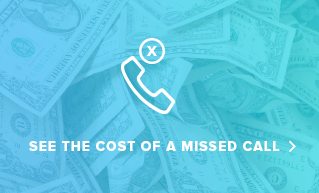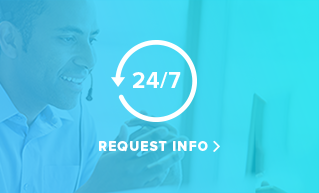When it comes to healthcare, trust is everything. 
From the very first conversation a prospective patient has with a medical receptionist, impressions of a practice are formed. Whether someone is calling to schedule an appointment or just ask a simple question, receptionists wield a lot of power. Though the work might seem tedious at first glance, these professionals must deliver quality caller experiences no matter who is on the end of the line. When a medical receptionist fails to meet expectations, patients may simply hang up and dial another practice.
Given the high stakes and sensitive patient data involved with such conversations, medical receptionists would do well to hone their skills. Here are five things these professionals must know when handling inbound calls from patients:
Make Phone Etiquette a Priority
When it comes to our health, we expect our doctors and nurses to follow the highest standards possible. When a medical receptionist greets us politely and addresses each concern with patience, it’s easy to bank on the in-house medical team holding themselves to similar standards. Conversely, when a receptionist is rude or impatient, we’re less likely to want to come in for an appointment.
Answering the phone should be like greeting a patient who walks into the office. By addressing them kindly, answering questions with empathy, and following traditional phone etiquette, medical receptionists can ensure patients feel comfortable about their appointment. It’s an easy way to project an image of confidence, authority, and professionalism.
Protect Patient Privacy
In an era where people are more privacy conscious than ever before, it’s important to prioritize patient data whenever possible. That’s not just industry best practices – it’s the law. Medical office receptionists must be careful to verify patient information, as carelessness can lead to HIPAA violations. Even a single misstep in information verification can negatively impact the patient experience, casting doubt on a practice’s professionalism.
By taking time to carefully verify patient information including birthday, insurance details, and contact information, receptionists assure callers that their private records are safe. These records must be updated routinely, so be cautious about what you choose to share over the phone. Avoid sending sensitive patient information via unsecured text message, as this is a common HIPAA violation. Instead, turn to healthcare communication portals to communicate with patients virtually.
Minimize Wait Times
The American healthcare system isn’t exactly known for its efficiency. Even still, medical receptionists must do everything in their power to reduce wait times. Many callers are eager to speak with their doctor directly. Given how overscheduled most physicians tend to be, this isn’t always an option. Some medical receptionists opt to place callers on hold until their doctor can come to the phone. The longer a person waits, the more frustrated they are likely to become.
The next time a person asks to speak with their doctor, keep this phone tip in mind. Inform the caller that the doctor is unavailable. Then ask for their contact information and reasons for calling. This information allows staff to pull their chart and set up a time for their doctor or a nurse to call back. This reduces wait time for the patient while simultaneously freeing up the practice’s phone line, allowing other patients to call in. Doctors and nurses will be relieved at the number of interruptions they’re faced with each day.
Channel Calls Strategically
A medical receptionist must be a jack of all trades, with a little bit of knowledge about a lot of different topics. From healthcare privacy laws to employee phone call preferences, it’s a lot to keep in mind. One way to manage all these disparate pieces of information is to route calls in a strategic way. When picking up the phone, a medical receptionist should be prepared to forward each caller to the most appropriate department. This helps callers get answers to their questions more quickly and minimizes the amount of caller-specific information the receptionist must hold in their head at once.
Consider all the various reasons a person might call into your office. From appointment scheduling to medication management, the options are incredibly varied. A medical receptionist is the first line of defense for a busy practice. By re-directing callers to the most appropriate department or person, questions and concerns are addressed as efficiently as possible.
Increase Your Availability
Most healthcare practices stick to fairly traditional working hours. Patients typically take time off of work to come in for appointments, but finding time to schedule them can be a headache. Medical customer service tips are only so helpful – a patient voice at the end of the line must be available around the clock. Busy signals and automated voice menus tend to turn away patients who are eager to speak with a real, live human being.
You know you need to improve your customer service offerings. Increasing the hours that your medical receptionist is available is a great way to do so. Patients of all ages and backgrounds will appreciate knowing that you’re available even after the staff has gone home for the day. By burning the metaphorical midnight oil, you’ll quickly foster a reputation for reliability. Staffing a 24/7 phone line with full-time employees can be expensive, though. That’s why so many medical offices turn to MAP Communications for help.
Improve Telephone Management with MAP Communications
Our virtual medical receptionists can help you level up your service offerings with 24-hour HIPAA-compliant support. No matter your goals, our team of highly-trained professionals can seamlessly support your in-house administrative team. Roll calls over to our team during busy times so no patients are kept waiting and flip those phones to us when your office closes for 24/7 coverage. Give us a call or send us a message today to find out more!
Here are some related articles you might be interested in:
5 Steps to Dealing with Upset Callers
How Long are Customers Willing to Wait?
How to Ensure Your Customer Service Doesn’t Suffer During Social Distancing


